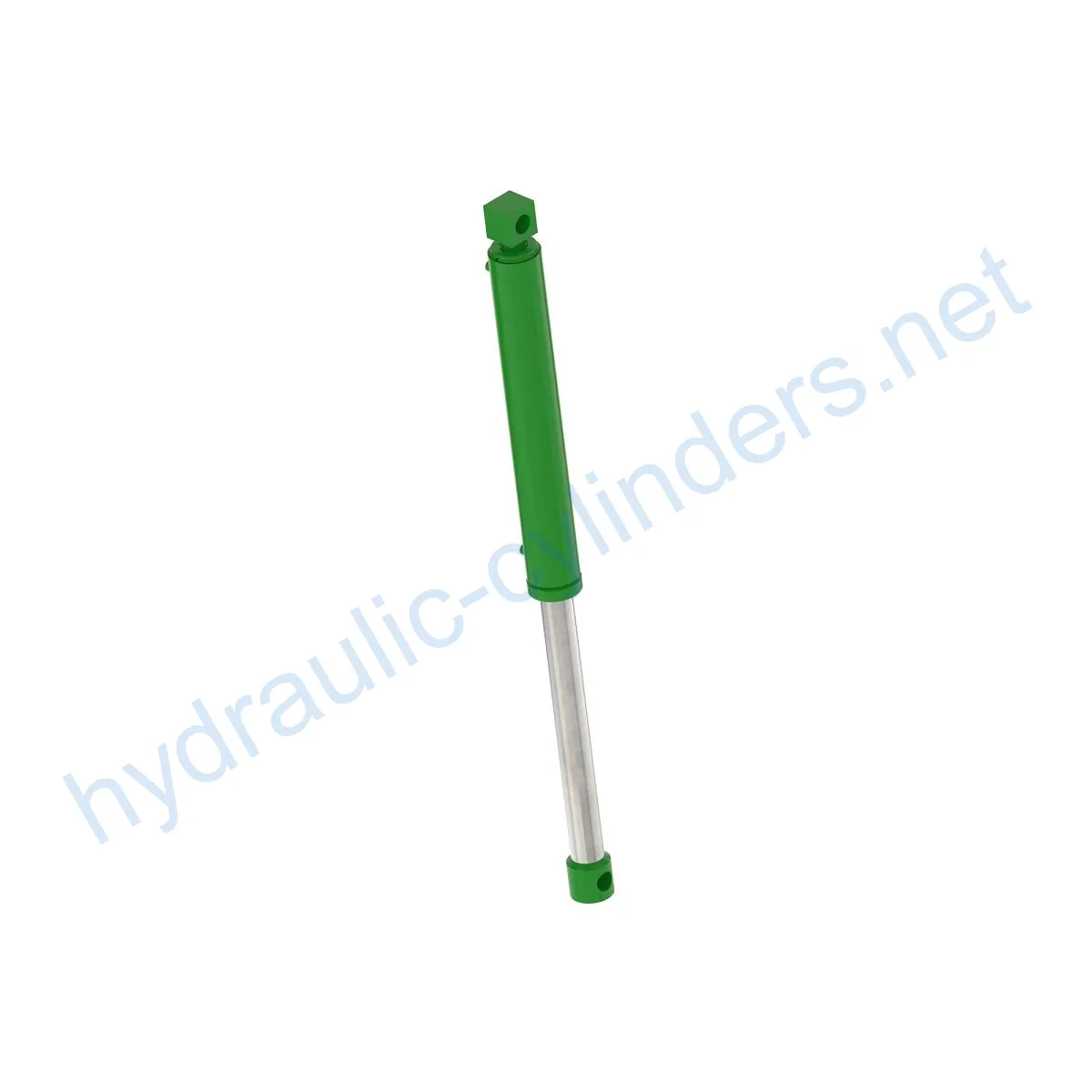Replacement Of AHC15768 Hydraulic Cylinder
Mint a hidraulikus hengerek egyik gyártója, szállítója és exportőre a mechanikai termékek, kínálunk hidraulikus hengerek és sok más termék.
Kérjük, lépjen kapcsolatba velünk a részletekért.
Posta:sales@hydraulic-cylinders.net
Hidraulikus hengerek gyártója, szállítója és exportőre.
Replacement Of AHC15768 Hydraulic Cylinder
Firstly, let’s introduce the product and define what this hydraulic cylinder is and its purpose. The Replacement Of AHC15768 Hydraulic Cylinder is a crucial component used in various applications to provide hydraulic power. It plays a vital role in converting hydraulic energy into mechanical force, allowing machines to perform tasks efficiently.
Specifications
- Weight: 86 lb
- Height: 6.5 in
- Width: 10.7 in
- Length: 61.8 in
Model: H340
Features
- Improved Equipment Performance: Replacing damaged or worn-out hydraulic cylinders can restore the normal operation capability of equipment, ensuring optimal performance in various applications.
- Enhanced Safety: Regularly replacing hydraulic cylinders reduces the safety risks associated with cylinder failures, ensuring the safety of both operators and equipment.
- Overload Protection: New cylinder designs often incorporate better overload protection mechanisms, enhancing safety during operation.
- Quick Installation: Modern hydraulic cylinders are designed for easy installation and replacement, minimizing downtime.
- Standardized Components: Many hydraulic cylinders are standardized products, making it easier to obtain replacement parts in the market.
We are capable of producing this product and can provide perfect replacements for these hydraulic cylinders.
Applications
- Excavators: Hydraulic cylinders in excavator booms or buckets may get damaged due to long-term usage or overload, requiring replacement to restore proper operation.
- Cranes: Hydraulic cylinders in crane boom systems are prone to wear during frequent lifting and lowering processes, necessitating regular replacement to ensure safety.
- Tractors: Front-end loader hydraulic cylinders in tractors can develop leaks or diminished performance due to continuous lifting and tilting operations, requiring replacement.
- Harvesters: Hydraulic systems in harvesters endure high pressure during the harvesting process, and cylinder fatigue can occur, necessitating timely replacement to maintain work efficiency.
- Automated Production Lines: Hydraulic cylinders are used to control robotic arms and other automated equipment. Cylinder failures can disrupt production efficiency, requiring immediate replacement.
- Die Casting Machines: Hydraulic cylinders in die casting machines can experience performance degradation under high pressure and temperature. Regular replacement ensures product quality.
- Mining Equipment: Hydraulic cylinders are used for lifting and moving heavy loads in mining equipment. Regular inspections and replacements are necessary to avoid equipment failures in harsh working environments.
- Bulldozers: Wear on hydraulic cylinders in bulldozer blade systems can result in reduced pushing capability, requiring prompt replacement to maintain operational efficiency.
Maintenance Tasks
- Regular Inspections: Proper installation, lubrication, and adjustment are essential for hydraulic cylinder longevity. Providing correct alignment guidance during installation and recommending the use of appropriate mounting brackets to secure the cylinder are highly important.
- Seal Replacement: Periodic seal replacement helps maintain cylinder performance. Using various seals, such as piston seals and rod seals made of wear-resistant materials like polyurethane and nitrile rubber, ensures long-lasting durability.
- Lubrication: Proper lubrication with the appropriate amount of hydraulic oil is necessary to ensure smooth operation and prevent excessive friction that can lead to cylinder damage.
- Calibration Checks: Regular calibration checks help identify any deviations in cylinder performance and allow for necessary adjustments to optimize functionality.
Safety Considerations and Environmental Factors
When using hydraulic cylinders, prioritizing safety measures is crucial. Proper handling, maintenance, and adherence to safety protocols are necessary to prevent accidents or injuries. Additionally, considering environmental factors during cylinder usage ensures minimal impact on ecosystems.
Fault Diagnosis and Common Issues
Common faults that can occur with hydraulic cylinders include leakage, insufficient power, slow operation, and abnormal noise. These issues can be caused by seal damage, cylinder misalignment, or contamination. Prompt diagnosis and troubleshooting are crucial to restore proper cylinder functionality.
Troubleshooting Tips and Solutions
To effectively diagnose and resolve issues, follow these tips:
- Inspect seals for damage and replace them if necessary.
- Check cylinder alignment and readjust if needed.
- Ensure proper lubrication and clean the cylinder of any contaminants.
- If problems persist, consult the recommended inspection, repair, and replacement procedures. We provide replacement parts and rebuilding services to extend the lifespan of your hydraulic cylinders.
Design Considerations and Selection Criteria
When choosing hydraulic cylinders, consider the following factors:
- Load-bearing capacity
- Sealing effectiveness
- Durability
- Safety features
- Maintenance accessibility
Sealing and Lubrication
To ensure optimal performance and longevity, hydraulic cylinders utilize various seals, including piston seals and rod seals made of wear-resistant materials. The cylinder body and threaded ends undergo meticulous surface treatment to enhance wear resistance. Regular lubrication with the appropriate hydraulic oil is necessary to maintain proper operation.
Regular Inspections and Preventive Maintenance
Regular inspections and preventive maintenance are vital to extend the lifespan of hydraulic cylinders. Proper installation, lubrication, and adjustment play key roles in maintaining cylinder performance. Providing correct alignment guidance during installation, recommending the use of appropriate mounting brackets, and sharing inspection, repair, and replacement procedures are essential for maximizing the service life of hydraulic cylinders.
Installation Guide
Follow these steps for proper installation:
- Ensure the cylinder and mounting surfaces are clean and free from debris.
- Align the cylinder properly and use the appropriate mounting brackets to secure it.
- Tighten all connections to the recommended torque specifications.
- Perform a thorough inspection to verify proper installation.
About Our Company
We are a leading manufacturer and wholesaler of replacement hydraulic cylinders, offering a comprehensive range of products for domestic and international markets.
Our company stands out with:
- Expertise in hydraulic cylinder production
- International certifications
- Customization services
- State-of-the-art production
Take a Tour of Our VR Factory:
Take a tour of our VR factory with the following
Hydraulic Cylinder Application:


